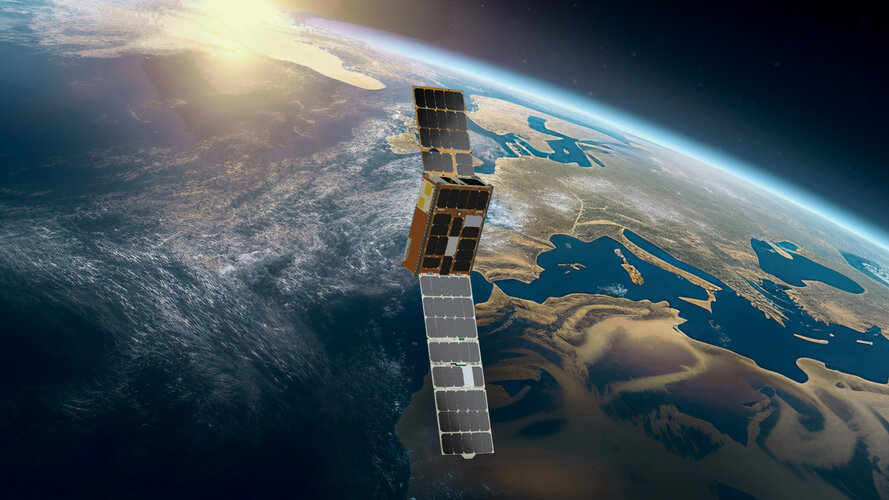ALISIO-1 carries two payloads. The first is an imager designed and developed at the Instituto de Astrofísica de Canarias, an astrophysical research institute in the Canary Islands, Spain. This will serve various purposes, including the monitoring of wildfires and volcanic activity. The second is a communication terminal that uses a laser to transmit data, offering several advantages over the more typically used radio frequency communication methods. For example, data are transferred at a higher level of security, due to the narrow beam nature of laser signals. This marks a big step forward for future space missions and satellite communications, where robust and secure communication are vital.
This satellite also validated a suite of technologies to build, test and operate satellites where every test is recorded as a digital history throughout the satellite’s lifecycle, during both the development and the operational phases. This will enable faster identification and resolution of any problems encountered and will enhance the capability of Open Cosmos to deliver space missions faster, more reliably and more affordably.
The satellite was launched on 1 December, onboard a SpaceX Falcon 9 from Vandenberg Space Force Base, California, in the United States.
This development has been supported by the ESA Pioneer Partnership Projects, which is part of ESA’s Advanced Research in Telecommunications Systems (ARTES) 4.0 programme, with funding from the UK Space Agency.
Stephane Lascar, Head of Satellite Programmes Department, Directorate of Connectivity and Secure Communications at ESA, said: “The successful launch of the ALISIO-1 mission, as part of the ESA Pioneer Partnership Project SAPION, demonstrates the high value and effectiveness of the Pioneer programme. Through this programme ESA supports European New Space industry to develop, grow and demonstrate in orbit their space business solutions and become Space Mission Providers."
Florian Deconinck, Vice President for Growth at Open Cosmos, said: “The Pioneer partnership is instrumental in developing space missions in an affordable, efficient and reliable manner for customers. We have been able to digitalise many parts of the mission lifecycle process, from design to test recording as well as operations. This is fundamental to growing our business capability for satellite constellations, increasing our delivery speed while maintaining our impeccable 100% reliability in orbit. Our innovation combined with ESA’s expertise and guidance illustrates how NewSpace and legacy space can join forces to help address some of the biggest challenges.”



